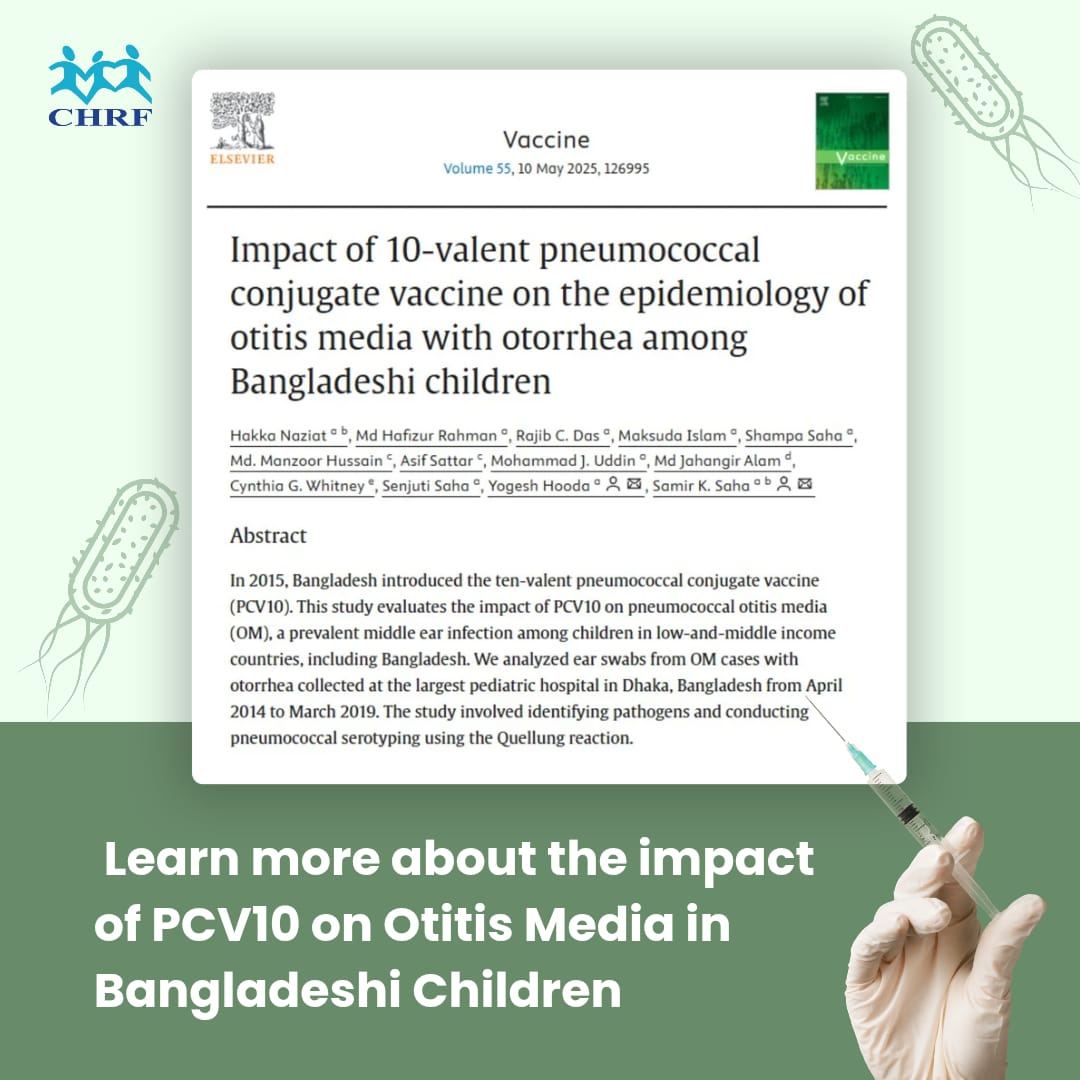
2025 marks 10 years since Bangladesh introduced the pneumococcal conjugate vaccine (PCV10)—a public health milestone we've proudly followed from the beginning. But this year stands out more than ever. We've just published the first evidence from South Asia on PCV10's impact on otitis media (OM), showing a clear reduction in disease burden among children.
The study, carried out at Bangladesh Shishu Hospital and Institute (BSHI),analyzed over 5,000 cases of OM between April 2014 and March 2019—a period covering one year before and four years after PCV10's introduction. Ear swabs from children with OM were tested to detect bacterial infections and observe trends in pneumococcal serotypes and antibiotic resistance.
Key Findings from the Study
The data collected from the study offers important insights into how the vaccine has shaped pneumococcal disease patterns among children in Bangladesh:
- The rate of pneumococcal detection in ear discharge samples decreased by 15.4% after the introduction of PCV10.
- Specific vaccine serotypes showed significant reductions, demonstrating the direct impact of the vaccine on preventing infections caused by the most common pneumococcal serotypes.
- While vaccine-covered serotypes decreased, non-vaccine serotypes (NVTs) showed a slight increase of 8.6%.
- The study found that receiving two or three doses of PCV10 provided 84.4% protection against OM cases caused by vaccine-included serotypes.
The Road Ahead
With the majority of children in Bangladesh receiving at least two doses of PCV10, the country has made remarkable progress in protecting its youngest population. This widespread coverage has helped lower the number of severe pneumococcal diseases.
As we celebrate these achievements, we’re also reminded that the work isn’t done. Continuous surveillance and data-driven vaccine updates are important to keep protecting the health and well-being of children in Bangladesh and beyond.
To explore full findings, read the publication here: https://www.sciencedirect.com/science/article/abs/pii/S0264410X25002920?via%3Dihub
